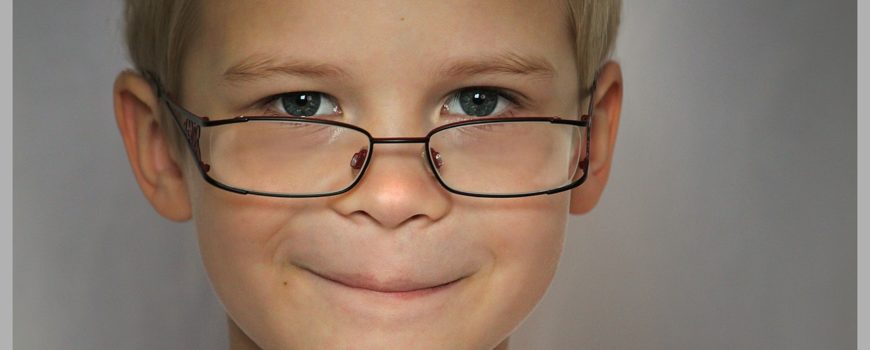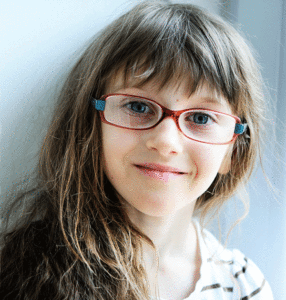Looking After Young Eyes
It’s easy for poor eyesight to go unnoticed in children. Young people may find it difficult to explain any difficulties the’re having with their eyesight. In fact, they may not even be aware they have any problem at all.
To make sense of the world we rely on many different kinds of information and 80% of what children learn is through vision.
How young people see the world affects how they respond to us, how they learn and how the world will respond to them as they grow and develop.
Poor eyesight can cause learning and behavioural problems. Vision and learning are closely related and some estimates are that up to 40% of children may have vision problems which affect their learning. Testing your child’s vision before they go into full-time education means that any problems that they may have are identified early.
The Sooner Vision Problems Are Detected, The Better The Outcome
Most young children have their eyesight assessed as part of routine developmental checks. While these tests are effective, they aren’t as comprehensive as an eye test by one of our qualified Auckland optometrists.
At John O’Connor Optometrist we recommend getting your child’s vision assessed early so we can set them up with better vision for life. Our friendly staff have been trained to help put children at ease and make regular eye checks a pleasant experience all round. If your child’s eyesight does need some help, our glasses for kids range is pretty cool!
Eye Exams For Your Child
It’s often difficult to tell whether your kid has sight problems, which is why regular eye tests are so important.
Children’s eye tests are different from eye test for adults. As we need to test kids’ eyes even if they are unable to read, our optometrists use specially designed charts that allow children to recognise shapes, pictures, or match letters.
Our optometrists have been specially trained to test children’s eyes; they understand the test room can feel a little intimidating so they will make it feel as welcoming as possible. Eye tests for children are not invasive or painful. They usually involve bright lights, coloured lenses or charts. You can, of course, stay with your child throughout the entire eye test so you can see everything that happens.
What Will Happen In Your Child’s Eye Test?
Depending on your child’s age, our opticians will use different approaches to test their eyes. But whatever their age, your child will have the vision in each eye tested separately and then tested together to see if they work properly.
Because a child cannot really explain which lenses have improved their vision, our optometrists will use an retinoscope which shines a light on the retina at the back of the eye. This allows us to measure the eye’s ability to focus.
If our optometrists think your child needs glasses we’ll then test out lenses of different strengths. Your child will then be asked to either read the standard letters chart, a special chart with shapes on it or picture books and other visual materials to test for colour blindness and how clearly your child can see.
Our optometrists also evaluate the muscles and associated structures to ensure they too are healthy. Conditions such as squint and amblyopia (lazy eye) can be treated much more effectively when picked up early and allowed to develop into more permanent eye problems.
Call 09 522 1283 to speak to our Newmarket optometrists to let us know any concerns you may have regarding your child’s vision. To speak to an optometrist in Henderson call 09 836 1731.
Glasses and Contact Lenses For Children
Children of all ages, including babies, can wear glasses and contacts. Our eye specialists can help you decide what type of eyewear is best for your child’s vision. We have some great glasses for kids to choose from. We also offer orthokeratology lenses for myopia control.
Glasses For Kids
If your child does need help with their eyesight, these tips might help:
- Let your child choose their own frames
- Plastic frames are best for children younger than two
- If your child has chosen metal frames, make sure they have spring hinges, which are more durable
- An elastic strap attached to the glasses will help active toddlers keep them in place
- Poly-carbonate lenses are best for all kids, especially those who play sports. Polycarbonate is light and impact-resistant, but these lenses do scratch more easily than plastic lenses.
We’re here to help and we take your child’s vision seriously. Contact us today for an eye check for your child.
Your Children’s Eyes In The Sun
Experts are constantly warning us of the risks to children’s eyesight by exposing them to bright sun without appropriate protection. Our UV protection glasses for kids range is very affordable and looks cool.
Paying For Eye Tests and Glasses for Children
Subsidies for children 15 years and younger who have eyesight problems
The New Zealand Ministry of Health can help pay for eye tests, eye patches and glasses for kids aged 15 years and under who have eyesight problems. The subsidy also covers repairs to glasses. This is the Enable children’s spectacle subsidy.
Who can get the eyesight subsidy?
You can get the Enable Spectacle Subsidy for child or young person who is 15 years of age or under, provided:
- the parent/guardian or child has a valid community services card, or
- the child has a current high use health card.
A higher level subsidy is also available for children and young people with more complex vision needs which require assessment 6 monthly, possible 6 monthly modification to spectacles, or more extensive intervention.
Please ask your friendly John O’Connor optometrist to check if your child is eligible.


